Mon, 29 March, 2021
The Laser and Sheet Processes section at TWI has worked with Saab AB, University West (Trollhättan, Sweden), VZLU A.S., Romaero S.A. and Queen’s University (Belfast, U.K.) in the EU Clean Sky2 project, OASIS. This has successfully developed robotic laser beam welding to help fabricate a new design of aircraft cargo door.
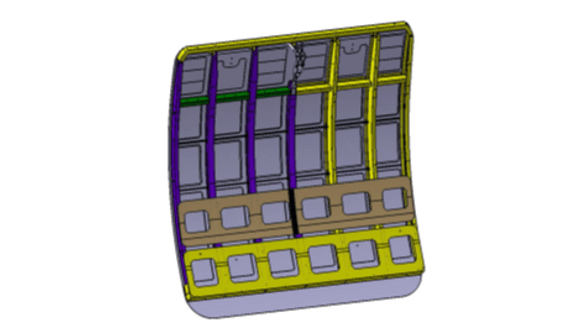
To achieve this, TWI assisted Saab in a series of detailed design reviews of the proposed door, helping to identify suitable laser beam welding process variants, aluminium alloys and joint configurations to use between the door’s frames, stringers and skin, as well as helping to foresee and resolve weld access issues. Representative coupon trials were then carried out by TWI to develop welding parameters to minimise heat input and distortion, whilst maximising the quality and performance of the welded joints.
Autogenous laser welding (welding without filler wire) was selected as the preferred process, given its simplicity and ease of access. Higher strength aluminium alloys are prone to hot cracking when fusion welded without filler however but TWI’s trials, supported by additional work on purposefully restrained coupons by University West, helped to identify suitable alloy combinations, as well as welding parameters, to avoid cracking. The final approach involved firstly a single-sided full penetration keyhole pass, to fuse the frames and stringers to integral shoulders on the door’s skin, followed by one or two dressing passes, using the same equipment, but defocusing the laser beam.
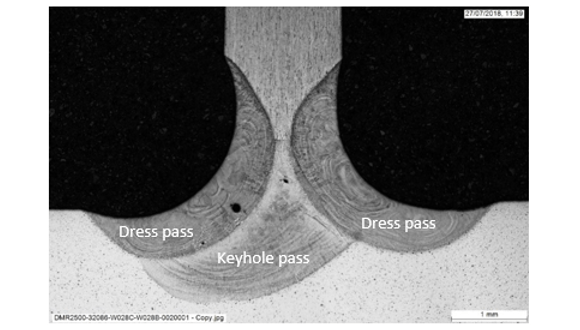
Part-dressed coupons were supplied to VZLU who characterised their tensile, fatigue and corrosion properties against those of the corresponding parent materials, finding that:
- Whilst welding reduced the ultimate tensile strength of the material in the frames and stringers by ~20% on average, the net effect on the strength of the door skin itself was negligible (<2%)
- The fatigue performance of the part-dressed joints was, as anticipated, below that of the constituent parent materials, as any undressed weld profiles still resulted in stress concentrations. Analysis of those fatigue failures, however, suggested that this effect can be reduced by carrying out full dressing, as shown above
- The corrosion performance of the joints was comparable with that of the more corrosion-susceptible frames but, overall, the integrity of the less susceptible skin alloy remained intact, not losing >10% of its strength in exfoliation, stress corrosion or salt spray tests
With coupon results showing promise, TWI then assisted Romaero in their design of the welding fixture for full-scale demonstration doors.
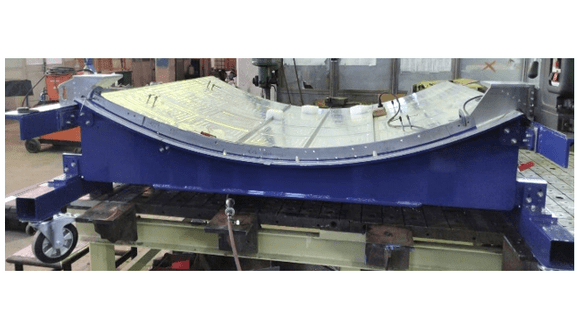
Using this fixture, and a suite of offline robot welding programs generated through simulations by Queen’s University, TWI then successfully completed the welded construction of a full door, joining on four 2m long curved frames, as well as three shorter inter-frame stringers.
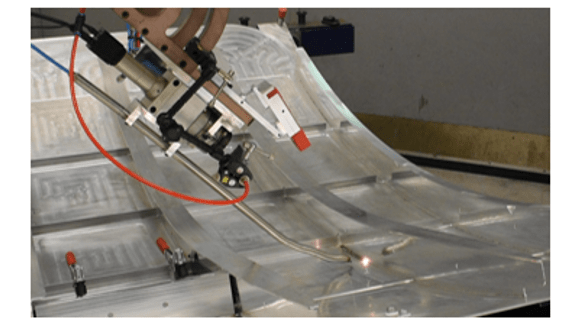
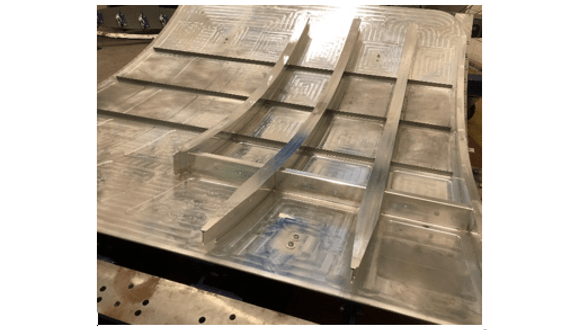
From models, supported with TWI’s inputs, Queen’s University have successfully demonstrated that this new production method can offer opportunities to not only reduce door weight, but also manufacturing time and costs.
The OASIS project has received funding from the Clean Sky2 Joint Undertaking under the European Union’s Horizon 2020 research and innovation programme, Grant Agreement No 785557.